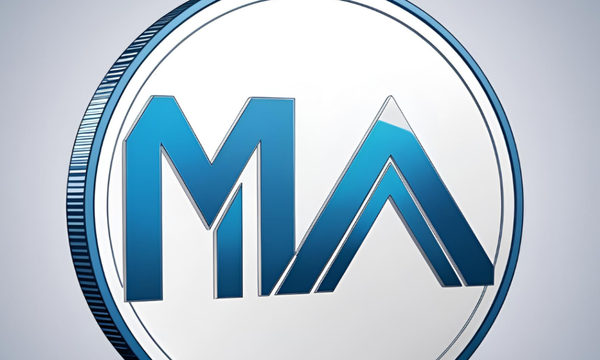Origin Protocol Allocates DAO Treasury Assets For Systematic OGN Token Repurchases Through 2026

Origin Protocol announced a comprehensive OGN token buyback program worth over $3 million, approved unanimously by the DAO community on June 30, 2025. The initiative allocates 100% of protocol revenue toward systematic token repurchases while distributing all acquired tokens directly to stakers rather than removing them from circulation.
The program combines treasury asset conversion with ongoing revenue streams to create sustained buying pressure. Protocol fees previously accumulated by the DAO will now fund regular buybacks through the second quarter of 2026.
Token Buyback Mechanics Drive Staking Rewards
Origin Protocol's buyback structure converts DAO treasury assets into yield-bearing instruments before purchasing OGN tokens. According to Origin Protocol, treasury funds will first transform into Origin assets like OUSD or OETH to maintain productivity while enabling consistent buybacks.
The first week launches with $100,000 in OGN purchases distributed alongside 1.3 million tokens already held by the DAO. Early stakers position themselves for enhanced rewards during this initial period. All buyback tokens flow directly to staking participants rather than being burned or permanently removed.
Monthly buyback cycles continue indefinitely using protocol performance fees. CoinMarketCap data shows OGN currently trades at $0.054 with a market capitalization of $38 million and 24-hour volume exceeding $27 million.
Staking rewards vary based on protocol earnings, DAO buyback amounts, lock-up duration, and total staked supply. Early participants expect strong double-digit yields from this revenue-sharing model.
DeFi Protocols Embrace Revenue Distribution Models
Origin Protocol joins a growing trend of DeFi protocols implementing token buyback programs. BeInCrypto reports that projects with buyback programs outperformed those without by 46.67% in 2024.
Recent implementations include Aave's $50 million annual buyback budget, dYdX allocating 25% of net protocol fees to monthly repurchases, and Hyperliquid's billion-dollar token accumulation. DWF Labs research indicates buyback momentum continues growing across major protocols.
These programs address the fundamental economic principle of supply and demand. By reducing circulating supply through systematic purchases, protocols aim to increase token scarcity and potentially drive price appreciation.
Bankless analysis notes that buybacks can signal strong financial health when protocols have established competitive advantages and covered growth opportunities. The strategy works particularly well for protocols with consistent revenue generation.
Traditional Banking Sector Monitors DeFi Innovation
Traditional financial institutions increasingly observe DeFi developments as cryptocurrency adoption accelerates. Reuters reports that major US banks hold internal discussions about crypto expansion following stronger regulatory endorsements.
Revenue-sharing models like Origin's buyback program demonstrate sustainable tokenomics that could influence traditional finance approaches. Banks seek clarity on crypto lending capabilities and market-making activities for digital assets.
Security.org data shows 28% of American adults now own cryptocurrencies, representing approximately 65 million people. This adoption rate has nearly doubled since late 2021.
The integration of blockchain technology by traditional banks creates opportunities for collaboration with established DeFi protocols. Standard Chartered partnered with Northern Trust to create Zodia Custody, while JPMorgan's Liink network facilitates faster interbank communications using blockchain infrastructure.
Market Analysis Points To Sustained Growth
Origin Protocol's buyback program reflects broader shifts toward fundamental value creation in DeFi. The elimination of new token emissions combined with revenue-driven repurchases creates a sustainable economic model that aligns protocol growth with token holder benefits.
CoinCodex forecasts suggest OGN could reach $0.067 by November 2025, representing potential gains from current levels. Price predictions vary widely, with some analysts targeting $0.26 by year-end based on protocol adoption and tokenomics improvements.
The systematic nature of Origin's buyback distinguishes it from one-time token burns. Ongoing revenue allocation ensures continuous buying pressure as the protocol scales its product suite including Origin Ether and Origin Dollar.
Market participants monitor whether this model proves more effective than traditional deflationary mechanisms. The combination of staking rewards with buyback-funded distributions creates multiple incentive layers for token holders.
The crypto banking sector predictions indicate significant expansion by 2025, with comprehensive regulatory frameworks supporting growth while protecting consumers. This regulatory clarity could accelerate adoption of revenue-sharing models across additional protocols.
Related Reading on DAO Times
For comprehensive insights into decentralized autonomous organization tooling and governance mechanisms, readers will benefit from exploring DAO Times' comprehensive guide. This resource provides practical frameworks for understanding how DAOs like Origin Protocol implement governance proposals, treasury management, and community decision-making processes that enable major initiatives like token buyback programs. The guide covers essential tools and strategies that support transparent, decentralized operations in the evolving DeFi landscape.





